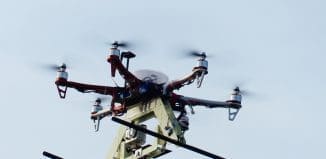New Helicopter May Revolutionize Military Aircraft
This post is also available in:  עברית (Hebrew)
עברית (Hebrew)
The Sikorsky-Boeing SB>1 DEFIANT helicopter achieved its first flight this week in West Palm Beach Florida. Co-developed by Boeing and Sikorsky, a Lockheed Martin company, DEFIANT will help define the next generation of military helicopters.
Unlike traditional helicopters, the DEFIANT sports two coaxial main rotors with an additional rotor in the back of the aircraft for horizontal propulsion, based on the Sikorsky X2 design. With active rudders and elevators, the unique design allows the chopper the ability to reach speeds twice as fast as traditional helicopters and distances twice as far. The use of X2 technology grants the helicopter sharper maneuverability and increased survivability in a cost effective way, such that the new chopperI shows superior flight maneuverability in low-speed flights, high speed flights, and hovering.
Taking its inspiration from the X2’s design, the two coaxial rotors on top of the chopper rotate in opposite directions allowing for extra lift since each rotor’s advancing blade balances out the diminished lift from the opposite sides retreating blade. Not only does this diminish retreating blade stall, a hazardous flight condition in which a chopper could stall and lose lift, but it also reduces wear on systems and parts, generally increasing reliability and lowering maintenance costs.
Combining the vertical lift characteristics you get from a helicopter with the fast and sharp maneuverability that airplanes have, the DEFIANT truly defines the future of military aircraft. With the ability of being able to take off and land almost anywhere, the helicopter is ideal for transport, evacuation, resupply, and rescue missions.
Superior hoverability also grants the DEFIANT an edge in attacking ground targets, because of this attack & assault versions are manufactured as well.
Boeing mentions that the helicopter is participating in the Army’s technology demonstrator program. Data from the first test flight will help the Army develop requirements for the next generation of military helicopters, expected to enter service in the early 2030s.




























